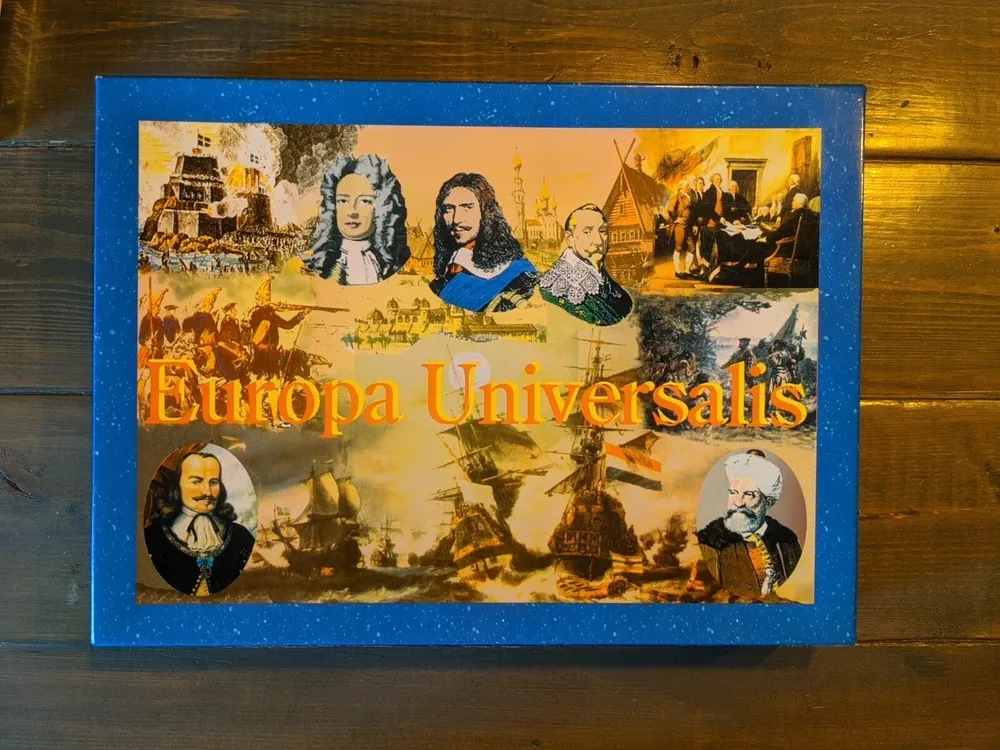Europa Universalis (1993)
Europa Universalis is a geopolitical strategy board game created by Philippe Thibaut and released by Azure Wish Enterprise on April 27, 1993. The game allows players to compete as the powers of Europe during the period 1492 to 1792. It has gained popularity and significance due to its ambitious scope, historical authenticity, and the involvement of Paradox Interactive, a well-known publisher of strategy games.
Game Components of Europa Universalis
– 1,000 markers
– Two 56 cm × 86 cm (22 in × 34 in) maps: one for Europe and one for the rest of the world
– A 72-page English rulebook
Game Setup of Europa Universalis
Players take turns to draw cards to their hand and spend administrative, diplomatic, and military resources to resolve actions across the map. The game has three main phases: an early game where players draw lines of influence and power, a middle game where they build up armies, trade, and colonize, and a late game where they start trying to take each other down.
Gameplay Mechanics of Europa Universalis
Europa Universalis is a historical 4X game, focusing on empire-building aspects rather than direct combat. Players must improve relations with neutral neighbor nations, ally with them, and absorb them through marriages, personal unions, or demonize them and line up some justified wars. The game maintains the empire-building aspects of Europa Universalis while streamlining some of the complexities found in the video game version.
Game Objective of Europa Universalis
The goal of Europa Universalis is to become the dominant power in Europe, achieving victory through a combination of diplomacy, trade, colonization, and war.
We are supported by our audience. When you purchase through links on our site, we may earn an affiliate commission, at no extra cost for you. Learn more.

